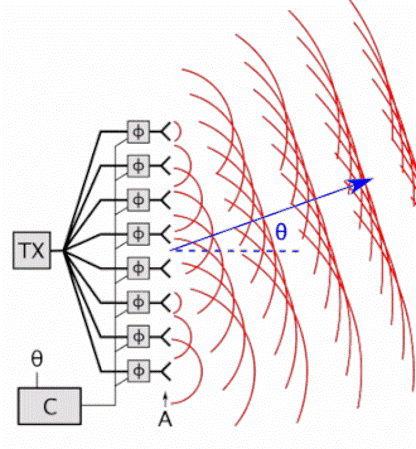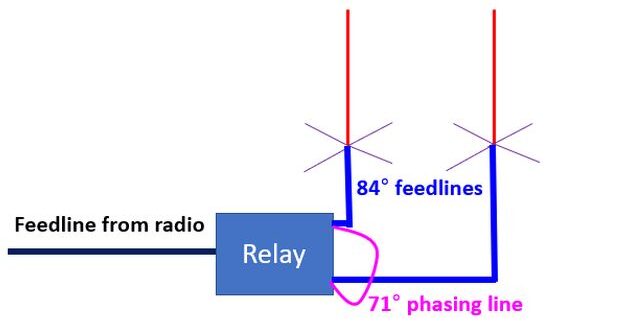What are Phased Array Antennas in Ham Radio?
What are Phased Array Antennas in Ham Radio?
Phased array antennas are those in which the radiation pattern of the antenna can be changed without physically moving the antenna. For the ham radio operator, it would be quite interesting if you can steer the beam without the need for an antenna rotator! The same principle is used in ultrasound imaging to steer the ultrasound beam. If several antenna elements are fed from the same transmitter with a phase shift, the direction of the beam can be changed by changing the phase shift. This is possible when a computer controls the phase shift to each element. It is widely used in the field of radar imaging.

In the illustration, computer controlled phase shifter changes the phase of the signal fed to each element. The progressive delay in signals would in effect change the direction of the superimposed signal wavefront to an angle depending on the phase shift given. By altering the phase shift, the angle theta at which the beam is radiated, can be changed without physically rotating the antenna. This is a one dimensional array while modern radar systems have two dimensional arrays with large number of elements.

In case of ham radio, at higher wavelengths, only limited number of elements are possible and steerability will not be that high. Three elements at the corners of an equilateral triangle has been used to steer the beam 120 degrees by manually changing the feeds. In the simplest form, a length of cable is used to produce the phase shift in the signals fed to the elements in ham radio. In one configuration, the phasing line used by VA7ST was a 3/4 wavelength 75 ohms RG6 cable. Two element vertical phased array for 40 m has been used to direct the beam in one direction with strong directivity and forward/backward ratio. The spacing between the elements was quarter wavelength. DPDT relays can be used to switch connection between the vertical elements. The radiating elements were quarter wavelengths.